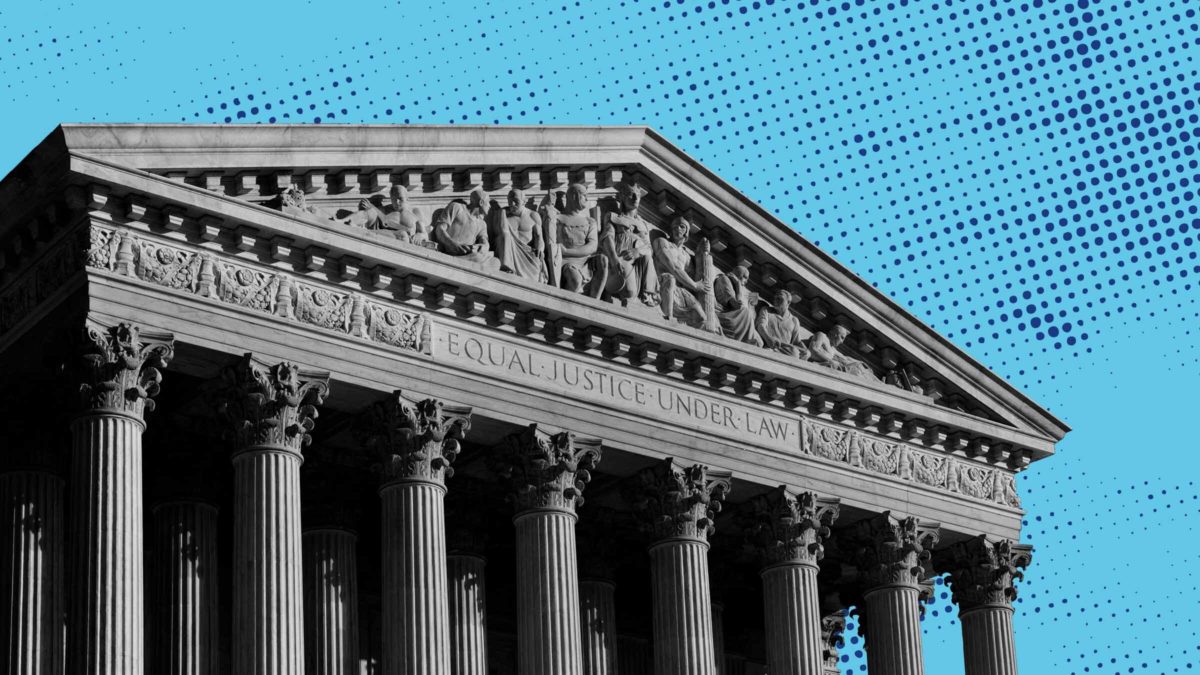Last month, the Supreme Court announced that it had granted review in Vega v. Tekoh, a case about whether people can sue police officers who do not provide them with a Miranda warning—“You have the right to remain silent,” and so on—before asking questions. A favorable decision for Carlos Vega, the Los Angeles County sheriff’s deputy whose dubious interrogation methods are at issue in the case, would make it even harder to hold police accountable for constitutional violations in the future.
Vega did not arrive at the Supreme Court by accident. None of the cases on the Court’s docket arrive there by accident. Every year, the justices agree to hear only about 80 cases out of the roughly 8,000 petitions for review that they receive. And although the U.S. legal system touts itself as open to all—“EQUAL JUSTICE UNDER LAW” is literally engraved above the Supreme Court’s front door—the reality is different. Many of these successful petitions come from a very small group of elite lawyers—Supreme Court bar superstars whose services are accessible only to the wealthiest, best-connected, and most privileged.
Representing Vega and the sheriff’s department here are two such lawyers: Gregory Garre and Roman Martinez. Garre served as Solicitor General under President George W. Bush; Martinez spent three years as an Assistant to the Solicitor General during the administration of President Barack Obama. Garre clerked for former Chief Justice William Rehnquist; Martinez clerked for his successor, Chief Justice John Roberts, and for Brett Kavanaugh, then a federal appeals court judge. Garre chairs the Supreme Court and appellate practice at the law firm of Latham & Watkins, and has argued before the Court 45 times. (Martinez, also of Latham, a mere nine.) One analysis found that between 2001 and 2015, Latham had earned the second-highest success rate among law firms for petitions accepted by the justices.
There are no public rules on the process for granting Court petitions, but there are clearly unwritten rules about who gets heard and who doesn’t.
For the most part, these “repeat players” of the Supreme Court bar have a lot in common: They went to elite law schools, clerked for a justice, and now work at some of the legal profession’s most prestigious private firms. Most of them are white men. As public interest appellate lawyer Deepak Gupta told the Biden administration’s Supreme Court reform commission last year, although this group of lawyers submits less than 1 percent of petitions the Court considers, they end up participating in nearly half the cases the Court takes up.
Things weren’t always this way; decades ago, it would have been unusual for a firm to file multiple petitions for certiorari in a given year. But as Harvard Law School professor Richard Lazarus writes, starting in the 1980s, large law firms began building out their specialty Supreme Court practices, inspired by the conservative tilt of the Rehnquist Court. Around the same time, in-house corporate lawyers began working together at organizations like the U.S. Chamber of Commerce Litigation Center to coordinate pro-business legal strategies.
Today, members of this tiny slice of the legal profession are held in high regard inside the courthouse. In a survey of former Supreme Court clerks published in 2004, for example, 88 percent said they would lend “additional consideration” to friend-of-the-Court briefs signed by famous lawyers, and many noted that briefs written by an “inner circle” member of the Supreme Court bar “would always receive close consideration.” There are no public rules on the process for granting Court petitions, but there are clearly unwritten rules about who gets heard and who doesn’t.
The composition of the Supreme Court bar signals a larger problem that Lazarus and others have called “docket capture.” Ethics rules generally prevent lawyers from bringing claims that would conflict with the interests of former or current clients. As a result, those parties who aren’t clients of the well-heeled lawyers who monopolize the Court’s docket—whether large corporations or well-funded police departments—have a much harder time getting a case before the justices, forced to lean heavily on some combination of legal academics, nonprofit organizations with limited resources, and the pro bono appetites of lawyers who would otherwise charge well over $1,000 per hour for their services. The elite Supreme Court bar’s ongoing dominance of the docket, Lazarus warns, “risks perversely increasing the advocacy gap in the Court between those who can pay and those who cannot.”
That’s how we get to where we find ourselves in Vega: with an ultraconservative Supreme Court giving serious consideration to a big-shot lawyer’s request to further insulate members of the Los Angeles County Sheriff’s Department, a sprawling law enforcement organization with a litigation budget in the tens of millions of dollars, from financial liability for their actions. For as long as the courtroom is mostly open to those who can pay top dollar for brand-name Supreme Court advocates, wealthy, powerful interests like these will keep coming out on top.

